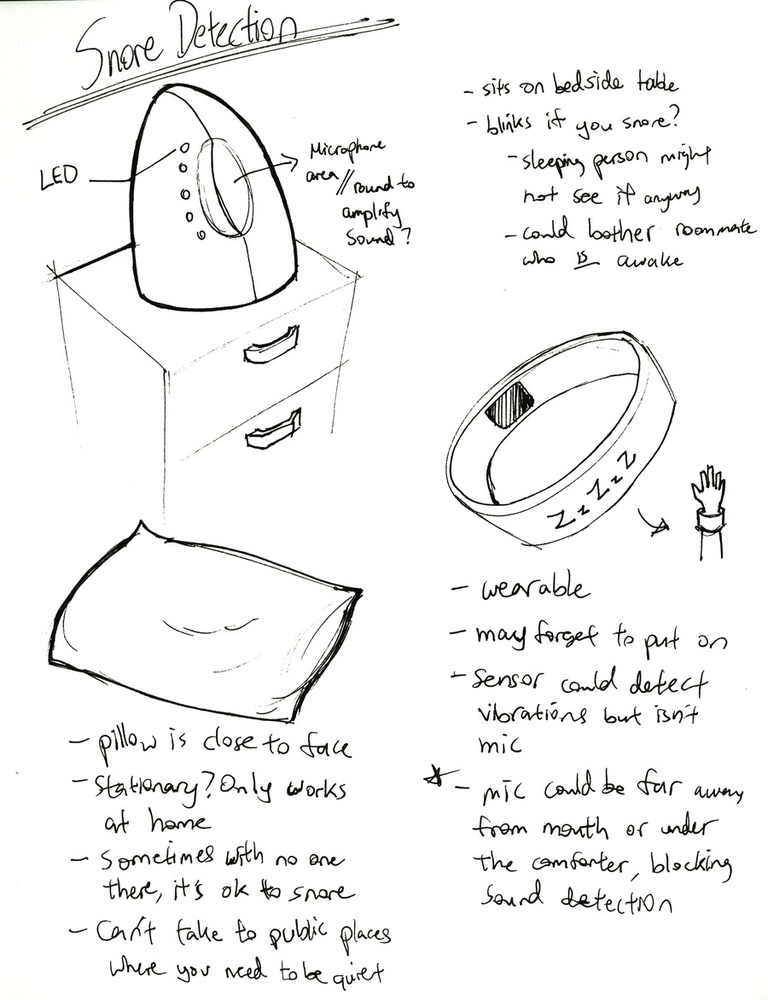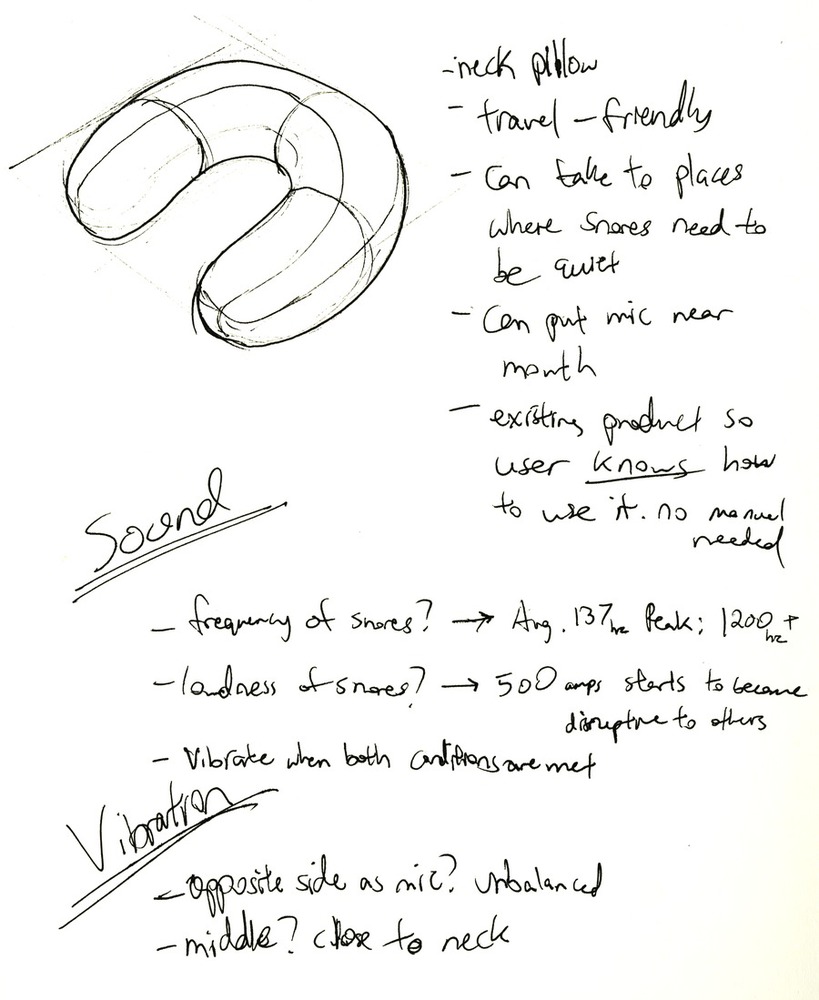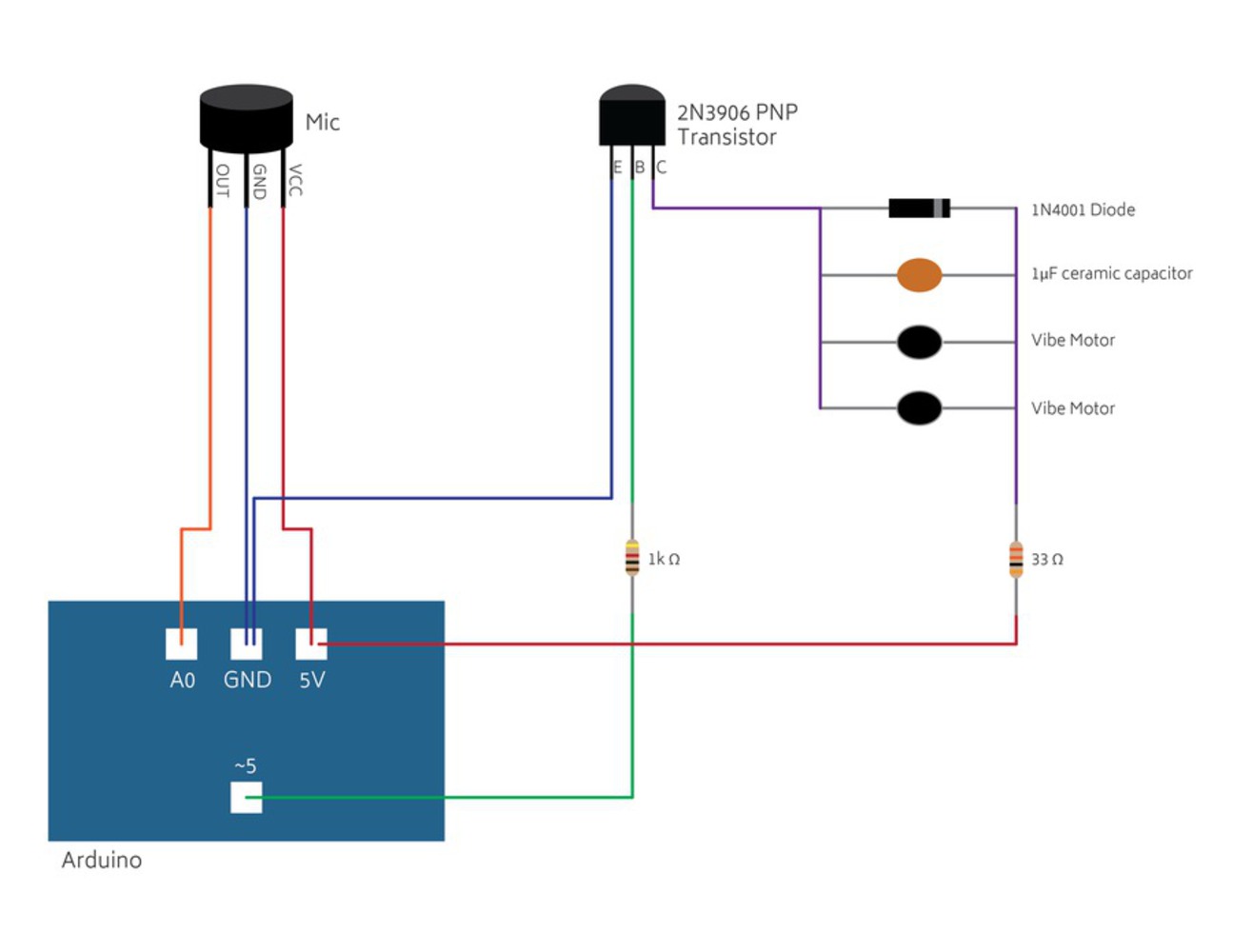Problem
Ever had someone snore loudly next to you on the plane? Or were you ever the roommate who disrupted the peace at night?
Snores cause disturbances in public, and while the sleeper is completely oblivious to the effect they're having on others, people nearby are adversely affected. They may be trying to sleep, read, work, or do other tasks, but hearing loud snores every few seconds can be very distracting.
Solution
Stertere causes a slight disturbance in the snorer's sleep, causing them to stop snoring but not wake up.
If you've ever seen your roommate stop snoring when they turn over in their sleep, then you've seen the effect that Stertere tries to recreate. Whenever Stertere's mic picks up a loud snore (a low frequency high amplitude sound), the vibration motors in the pillow will activate for 2 seconds, giving the snorer enough of a strange sensation to disrupt their snores. If the snore is consistently very loud, the vibration motors will stay activated until the snores stop.
Stertere is designed to have both a travel pillow and a home pillow. This eliminates the need to carry around a large pillow in public or the need to use a small pillow in bed. For the purpose of this project, only the travel pillow was created.
Process
First, I found the optimal placement for the mic and vibration motors. (See pictures below)
Then I needed to know the frequency of typical snores. Turns out there is quite a range for snore frequencies, depending on each person's biological differences and the quality of sleep. The average snore is around 137Hz but the peak frequency was over 1200Hz. (This would serve as the basis for the conditions in my code)
I tested the average snore amplitude with the mic, and at around 350amps, the sound felt disruptive to the environment. I lowered the threshold of this amplitude significantly to account for the loss of sensitivity in the mic when it was covered with the fluffy fabric.
To put my idea into action, I first found a sample code that could detect frequencies (source referenced in the code). Then I hooked up an LED so that whenever the frequency and loudness met certain conditions, the LED would light up for 2 seconds. From there, I replaced the LED output with the vibration motors (along with all the other components needed to make the vibration motors work).
To see my full code and more detailed comments/explanation, click below:
Code: https://gist.github.com/anonymous/b0fd1cf90895f9a457c6







